INSIDE ISSUE 17.45 | Nov. 9, 2018
 NEWS: State’s federal dollars at risk if census participation low, lawmaker says
NEWS: State’s federal dollars at risk if census participation low, lawmaker says
BRIEFS: S.C.’s new congressmen, 16 new S.C. House members; beer wave
CALENDAR: Judicial Merit Selection public hearings next week
COMMENTARY, Brack: S.C. House races need to be more competitive
SPOTLIGHT: Charleston Animal Society
MY TURN, Wentworth: From Nuremberg to Pittsburgh
FEEDBACK: The people said no on superintendent amendment
MYSTERY PHOTO: There might be a couple of clues in here
S.C. ENCYCLOPEDIA: Sweetgrass baskets
NEWS: State’s federal dollars at risk if census participation low, lawmaker says

By Lindsay Street, Statehouse correspondent | An accurate population count in 2020 is needed to keep South Carolina’s share of billions of dollars in federal funding from decreasing, according to advocates.
South Carolina, where a third of its annual revenues comes from the federal government and more than 15 percent of its residents live in poverty, could be among those states seeing less federal money than needed to take care of its population due to an added question on the 2020 census of a responder’s and their household’s citizenship status, according to plaintiffs in a federal lawsuit. Advocates in the state say the question will cause immigrant households to not participate.
“It’s going to impact poor states like South Carolina tremendously,” S.C. Appleseed Legal Justice Center Director Sue Berkowitz told Statehouse Report.
The citizenship question was brought to trial this week after the U.S. Supreme Court declined to postpone the trial at the request of the U.S. Justice Department . How the trial plays out could mean the difference between a low participation rate or a typical participation rate among immigrant communities, advocates say. And if participation is low, federal dollars could go down, advocates say.
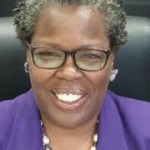
While South Carolina has a comparatively low Hispanic population, a recent estimate said 5.4 percent of S.C. households have at least one non-citizen.
“(State lawmakers) should take it seriously because it’s tied to revenue and lawmakers love to spend revenue on tax relief and various other incentives to businesses,” Democratic S.C. Rep. Gilda Cobb Hunter of Orangeburg said. “If there is a reduced population, that’s reduced revenue, and if you’ve got reduced revenue, that’s less money you have to spend on things you deem important.”
‘Super important’ to be counted
No funds have been set aside in the annual state budget to aid with the population count since fiscal year 2007-08 when a proviso set aside $1 million to promote and encourage participation in the census.
Charleston Republican Sen. Paul Campbell said South Carolina’s non-citizen population is likely too low for it to matter much to state coffers.
“I don’t think it’s going to be that much; if we were on the border maybe,” Campbell said.
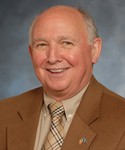
Campbell added that a correct population count is “super important” to the state, saying that the growing population could lead to increased federal representation in Congress.
S.C. House Ways and Means Chairman Brian White of Anderson said House Speaker Jay Lucas of Darlington would be best suited to speak on the issue, but Lucas’ office declined an interview request.
Cobb Hunter said correct counting of the census is not a partisan issue.
“There are people in South Carolina who say we don’t have large immigrant communities. I’d suggest they look again. We have a growing Hispanic population in this state,” she said. “When you don’t count people, you lose.”
Population counts and federal money
South Carolina is among the most dependent states on federal dollars, according to a study by WalletHub released in March. According to S.C. Senate Finance staff, more than $8 billion in the state’s revenues come from the federal government, accounting for roughly a third of overall funds.
South Carolina and its local governments also receive federal grants. According to data from the S.C. Revenue and Fiscal Affairs Office, 85 percent of federal government obligations in grants to state and local governments in fiscal year 1999-2000, were distributed on the basis of formulas that use data such as state population and personal income. The exact amount of federal funds given to South Carolina by these grants is currently not available, according to RFA staff.
According to a 2017 U.S. Census report, 132 federal programs used Census Bureau data to distribute more than $675 billion in funds nationwide during fiscal year 2015. Examples of federally-funded programs include: medical assistance, Supplement Nutrition Assistance Program, school breakfast programs, section 8 housing assistance, Head Start, Medicare, block grants related to substance abuse, wildlife restoration, adoption assistance and more.
Community-led effort
Cobb Hunter said while she hasn’t heard much from her fellow S.C. lawmakers on trying to engage the population to ensure a proper headcount, she has heard from lawmakers in other states. Many are working on creating local census commissions.
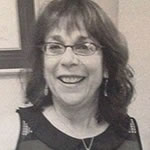
Cobb Hunter said she is talking with Orangeburg County elected officials to promote participation in the census through such a commission.
“Local government, which has more to lose than state government, can set up local commissions and make sure all stakeholders are involved to make sure everyone is counted,” she said.
Berkowitz said her organization is also working with other organizations to ensure an accurate count.
“We are going to do a lot of work in doing outreach and organizing around census work,” she said. “We have to. The census is going to be one of the most important things that will be happening over the next 10 years that will impact low-income communities and communities of color.”
- Have a comment? Send to: feedback@statehousereport.com
NEWS BRIEFS
NEWS BRIEFS: S.C.’s new congressmen, 16 new S.C. House members; the beer wave
By Lindsay Street, Statehouse correspondent | South Carolina will have two new congressman following this week’s elections thanks to a retirement and somewhat unexpected win in the Lowcountry.
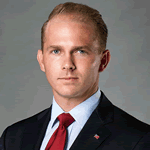
William Timmons. A sitting state senator from Greenville, Timmons crushed his Democratic foe with 57 percent of the vote in the race to replace the Fourth Congressional District’s Trey Gowdy. That leaves Timmons’ unexpired term open for a special election, likely early in 2019. Timmons defeated incumbent Republican Mike Fair in 2016 for the state Senate seat.
Joe Cunningham. The Democratic candidate from Charleston moved the First Congressional District, a nearly four-decades GOP stronghold district, by a swing of 25 points in his direction this week.

In the Charleston area, Cunningham, a political newcomer, won the First Congressional District race against favorite Republican Katie Arrington, who ousted incumbent Mark Sanford in the June GOP primary. After the election, Arrington blamed her loss on the lack of an endorsement from the man she beat in the GOP — U.S. Rep. Mark Sanford (who essentially ignored the criticism and said one endorsement doesn’t make much of a difference.)
Cunningham’s win puts two Democratic seats in Washington for South Carolina — something that hasn’t been seen since 2011 when U.S. Rep. John Spratt was still serving the Fifth Congressi
onal District (now, another reliably red district after Mick Mulvaney ousted him in the tea party frenzy of that time).
![]()
S.C. House Class of 2019 will have 16 new members
Although many of the general election races were unopposed, here a list of new House members who faced opposition in Tuesday’s general election. (Note: Some errors have been corrected):
- Republican West Cox defeated Democratic foe Lucy Hoffman to take the open seat of S.C. House District 10 in Anderson (formerly Republican Joshua Putnam’s seat);
- Democratic candidate J.A. Moore ousted Republican incumbent S.C. Rep. Samuel Rivers Jr. for S.C. District 15 of Berkeley;
- (added) Republican Randy Ligon won S.C. House District 43 of Chester, defeating Democratic candidate Tom Hawk;
- Democratic candidate Kambrell Garvin defeated
RepublicanLibertarian Justin Bishopfor the open seat ofin S.C. House District 77 in Richland County; - Republican Paula Rawl Calhoon defeated Democratic opponent Diane Summers take the open seat of S.C. House District 87 of Lexington (formerly Republican Todd Atwater’s seat);
- Republican Con Chellis bested Democratic challenger Damian Daly for the open seat of S.C. House District 94 of Dorchester (This was Arrington’s seat);
- Republican Mandy W. Kimmons beat Democratic incumbent Patsy Knight for S.C. House District 97 of Dorchester; and,
- Democratic challenger Krystle N. Simmons ousted Republican incumbent Bill Crosby for S.C. House District 117 of Berkeley.
Here are the new House members who were unopposed:
- Republican Adam Morgan won S.C. House District 20 of Greenville;
- Republican David Cox won S.C. House District 21 of Greenville;
- Republican Max Hyde won S.C. House District 32 of Spartanburg;
- Democratic candidate Annie McDaniel won S.C. House District 41 of Winnsboro;
- Republican Doug Gilliam won S.C. House District 42 of Union;
Republican Randy Ligon won S.C. House District 43 of Chester;- Democratic candidate Seth Rose took S.C. House District 72 (This was gubernatorial candidate Smith’s seat);
- Republican William Bailey won S.C. House District 104 of Horry; and,
- Democratic candidate Shedron Williams of Hampton won S.C. House District 122.
The S.C. House’s overall composition is unchanged from this year. Next year, it will have 80 Republicans and 44 Democrats.
Also something you may have missed in Tuesday’s election: The beer wave.
Sunday alcohol sales were approved by voters in at least seven local governments: Florence County, McCormick County, city of McCormick, Laurens County, Darlington County, city of Abbeville, Calhoun County, Anderson County and Greenwood County.
In non-election news, here are two updates to previous coverage by Statehouse Report:
Uranium contamination reported. Groundwater at Westinghouse’s nuclear fuel factory on Bluff Road outside Columbia has unsafe levels of radioactive material likely from two leaks. Read more here.
State regulators want permits for thirsty groundwater users. S.C. Department of Health and Environmental Control board has voted unanimously to require big farms and other big water-users in the the Midlands to get state permission before withdrawing water from the ground. Read more here.
- Our previous coverage on water usage by farms in the state.
- Have a comment? Send to: feedback@statehousereport.com
LOOKING AHEAD: Judicial Merit Selection public hearings next week
![]()
Staff reports | Starting Monday, the Judicial Merit Selection Commission will hold public hearings on nominees for Appeals Court and Circuit Court. Public hearings on the 32 nominees start 10 a.m. Nov. 12 through Nov. 15 at room 105 of the Gressette building.
Also, the House Ways and Means Committee’s education reform subcommittee will meet 11 a.m. Nov. 14 at room 521 of the Blatt building. Revenue and Fiscal Affairs Executive Director Frank Rainwater will speak. Click here for the agenda.
Click below for other items coming up in the Statehouse:
BRACK: S.C. House races need to be more competitive
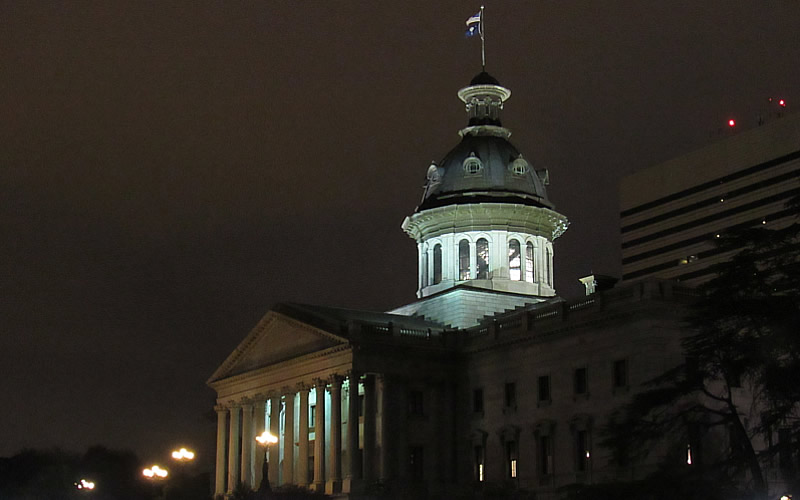
By Andy Brack, editor and publisher There’s a big lesson in the 2018 elections for the S.C. House of Representatives: The more competitive that elections are, the more likely the old order will be shaken up.
 Sadly in 2018, 80 of 124 races for the House were not competitive in the general election. Forty-two Republicans, mostly in the Upstate, and 28 Democrats faced no November challengers, although some had primary challengers in June. Of the 44 remaining November races, only 10 had margins of victory of fewer than 20 points, meaning they were somewhat competitive.
Sadly in 2018, 80 of 124 races for the House were not competitive in the general election. Forty-two Republicans, mostly in the Upstate, and 28 Democrats faced no November challengers, although some had primary challengers in June. Of the 44 remaining November races, only 10 had margins of victory of fewer than 20 points, meaning they were somewhat competitive.
Those 10 seats are the most instructive: Seven of the 10 challenged, competitive seats were along the coast. In Dorchester County, newcomer Krystle Simmons, a Democrat, beat GOP Rep. Bill Cosby, who hasn’t faced an opponent since 2010. Conversely in the same county, longtime Democratic Rep. Patsy Knight lost by six points to Republican newcomer Mandy Kimmons.
In nearby Berkeley County, Democratic newcomer J.A. Moore beat incumbent Republican Samuel Rivers Jr. And in Charleston County, which turned out big in the U.S. House race for Democratic candidate Joe Cunningham in his “blue wave” victory over Katie Arrington, James Island’s Carol Tempel came just two points short of knocking off GOP S.C. Rep. Peter McCoy.
Bottom line: Incumbents in the Trump era may be a little more vulnerable than people traditionally have thought. But if no candidates from other parties challenge incumbents, there can’t be real change.
So when the new session of the S.C. House gets underway in 2019, it will look about how it looked this year. The chamber will have 80 Republicans and 44 Democrats. And that should tell you something: Old-fashioned gerrymandering of districts to support incumbent officeholders has worked to favor the GOP year after year.
Just look at the state map. Republicans completely dominate Upstate House seats with only three Democrats, all black women, among office holders in the Upstate, which is home to one-third of House seats. It’s just all red. But imagine what would happen if some of the 40 Upstate seats, 27 of which were uncontested, actually had opponents in the general election? Despite hurdles caused by specially-drawn gerrymandered seats to protect incumbents, some of these seats might actually become competitive. At the very least, voters would have a choice.
Lowcountry House seats are competitive, in part, because new people are moving into the area. Charleston is trending blue because of the newcomers, but also because of an energized party that offers choices to voters.
“I definitely think my winning is indicative of change,” Simmons told Post and Courier reporter Brenda Rindge said. “I think that people are moving in every day, and you’re getting more of a mesh of people. I definitely think the way the county looks is changing, and I think that some of the people are realizing that not all change is bad change.
“Even some of the people who have been there their whole lives … they’re ready for something different. You don’t have to lose the integrity of who you are in order to embrace change.”
Dorchester County Democratic Party Chair Melissa Watson told the newspaper that voters like choices.
“I always knew that if the party had a candidate on the ballot that we would win that seat,” she said. “In 20 years, we never had a single Democratic choice. Krystle Simmons was unafraid to step up and say she was a Democrat.”
There are two more lessons in the 2018 election results, particularly for political parties: Start doing your job better to recruit, train and help candidates to run for House seats. It won’t be easy, particularly because the deck of gerrymandered district lines may be stacked against you. But if you don’t try, nothing will ever change.
Second, Democrats in the legislature should start hollering now that voters won’t accept more gerrymandering after the 2020 census. Other states, such as Iowa, and countries, such as Australia, have figured out ways to have independent commissions to draw lines fairly and without politics in mind. South Carolina needs to jump on the bandwagon of transparency, accountability and fairness in legislative reapportionment of districts. To do less is a slap in the face of voters who want real choices, not incumbents who go unchallenged year after year.
- Have a comment? Send to: feedback@statehousereport.com.
SPOTLIGHT: Charleston Animal Society
 We’re pleased today to shine our spotlight on a new underwriter, Charleston Animal Society, leader in the effort to make Charleston County a safe place for animals. Now the society is working to expand its Charleston success statewide to energize the state to reshape its 300-plus shelters and animal organizations into a no-kill network that stretches from Walhalla to Little River to Daufuskie Island.
We’re pleased today to shine our spotlight on a new underwriter, Charleston Animal Society, leader in the effort to make Charleston County a safe place for animals. Now the society is working to expand its Charleston success statewide to energize the state to reshape its 300-plus shelters and animal organizations into a no-kill network that stretches from Walhalla to Little River to Daufuskie Island.
Safe and healthy communities, neighborhoods and families don’t just happen – they’re built. “No Kill – No Harm – No More” shines a spotlight on animal abuse and family violence, which are often perceived and treated as separate issues. However, animal abuse is often the tip of the iceberg to larger issues in the home, such as child abuse, elder abuse or domestic violence.
- South Carolina’s most honored charity four years in a row
- National model for success
- Southeast’s only AAHA-accredited combined clinic and shelter
- Focused on solving problems rather than reacting to them year after year
- Publishes Carolina Tails, the largest pet magazine in S.C.
- No Kill. No Harm. No More. is a “movement” comprised of two major initiatives: No Kill Charleston and No Kill South Carolina.
- Learn more about the Charleston Animal Society and its work to create a network of humane network for the animals that bring joy to our lives.
MY TURN, Wentworth: From Nuremberg to Pittsburgh
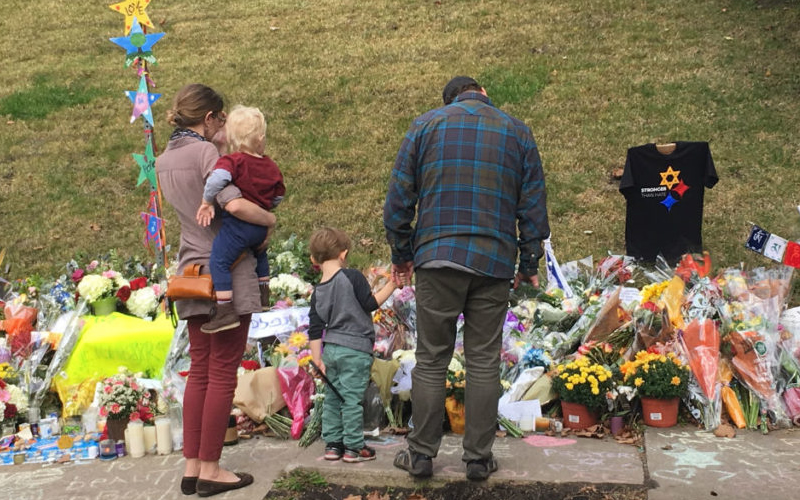
By Marjory Wentworth, special to Statehouse Report | In 2016, the lawyers from the International Criminal Court asked me to write a poem for the 70th Anniversary of the closing of the military tribunals at Nuremberg. At the time, I was finishing writing the book We Are Charleston, Tragedy and Triumph at Mother Emanuel, immersed in the unfathomable grief of the families and survivors. Charleston was still recovering from one of the worst hate crimes in American history
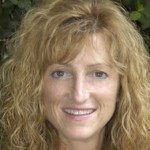
The links between racism and anti-Semitism are innumerable. In fact, the NAACP has Jewish roots. The organization was founded by both black and white civil rights activists, including a Jewish man named Henry Moskowitz. Most recently, we all witnessed this horrific connection at the white supremacist gathering in Charlottesville, Va., in May 2017, and now there is Pittsburgh and the anti-Semitic motivations of Paul Bowers who declared that he “wanted all Jews to die.” Dylann Roof’s manifesto was filled with anti-Semitic and pro-Nazi rhetoric, and his intention in Charleston was to start a race war. Now, we are grappling with another mass shooting in a sacred space — another murderer radicalized on the Internet, another American city burying the dead.
I grew up in Swampscott, Mass., in a predominantly Jewish neighborhood. Some of the shops were closed on Saturdays and many of the cultural traditions were not something we practiced in our home. It was a neighborhood haunted by the Holocaust, and that deep wound permeated my childhood and my understanding of human behavior. And then in the 1980s, I moved to Charleston, a place also haunted by a cruel past. The unhealed wounds of slavery seemed to permeate the institutions here. I was not prepared for it.
David M Shribman, executive editor of the Pittsburgh Post-Gazette, grew up in Swampscott, too. In a moving editorial published earlier this week he stated: “We knew it could happen here—any here, anywhere—when we learned that nine people were killed three years ago in the historic Mother Emanuel Church in Charleston, S.C….”
David and I lived in the same neighborhood, within walking distance of each other. David also lives in the Squirrel Hill neighborhood of Pittsburgh, just three blocks from the Tree of Life Congregation. This week, David reminded us that no American is immune from the danger of a mass shooter.
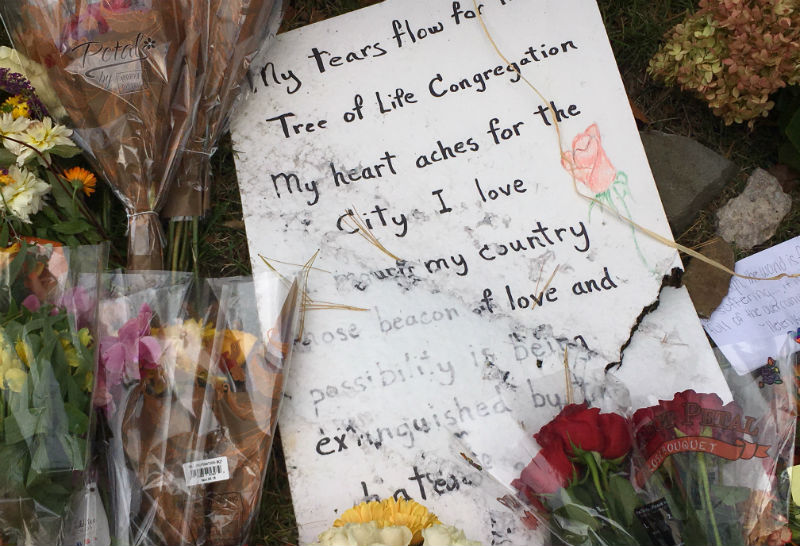
Not even first graders. Late on the morning of Dec. 14, 2012, my friend, poet Carol Ann Davis, sent me the following text: “The boys are ok, they go to a different school. Will call…” Although Carol Ann lives less than a mile from the Sandy Hook Elementary School, her children were spared. Because of zoning, they attended a different elementary school in Newtown.
I can’t be the only one who has friends in these communities impacted by mass shootings. I can’t be the only one who feels overwhelmed with the collective grief spreading across our country. I think of my husband’s film student who had worked with both the perpetrator and the victims at WDBJ in Roanoke when the shooter killed the reporter and cameraman on live television on Aug. 25, 2015. One month before that horrific murder, Jillian Johnson was murdered in a movie theater in Lafayette, La. She grew up with my husband’s best friend.
No one is safe anywhere in America. Not in our houses of worship, not in our homes, not in our schools, not in our movie theaters, not in our restaurants or shopping malls. According to the Gun Violence Archive, more than 12,000 Americans have been killed by guns in 2018; and there have been over 300 mass shootings (in which four or more people are shot).
We are living in a war that we have declared on ourselves.
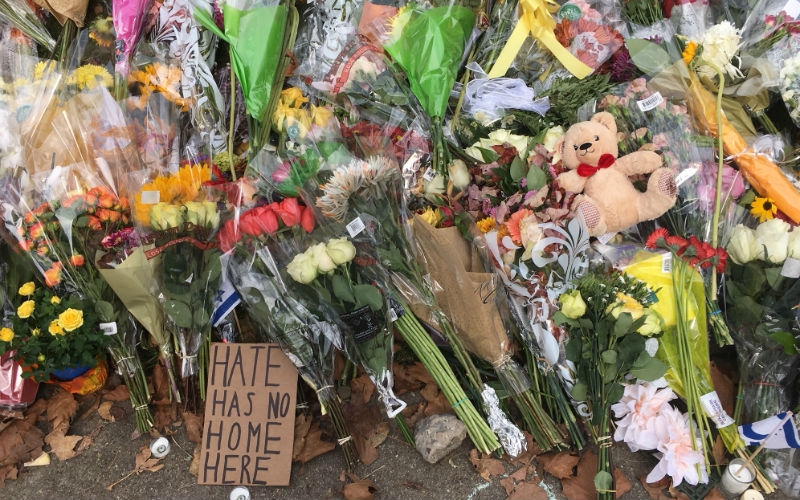
I will never understand our need to blame “the other” for perceived problems, nor do I understand our capacity to abandon everything we know is right. How quickly and easily we tear the ties that bind us on to another as if they were made of air.
As I watch the citizens of Pittsburgh bury the dead and come together as a community, I recall the great love that I witnessed in Charleston in the days and weeks of that long hot summer of 2015. I am reminded of the Rev. Clementa Pinckney’s prescient statement made two months before his murder, “Only love can conquer hate.” Carol Ann Davis calls it heroic love.
And I go back to Nuremberg and what it stands for. It is the actions we take based on this profound love for one another that have the potential to change the future. Make no mistake, the murders at the Tree of Life Synagogue in Pittsburgh and Charleston’s Mother Emanuel A.M.E. Church, were hate crimes and crimes against humanity. What separates genocide from other mass acts of violence is the intention of destroying a group of people based on race, religion, ethnicity or nationality.
Nuremberg and the founding of the International Criminal Court reminds us that there can be justice. We can create mechanisms to hold people accountable that are international in scope. The American legal system is fully equipped to deal with white supremacist and anti-Semitic mass murderers like Dylann Roof and Paul Bowers. Roof, accused and convicted of hate crimes, has been sentenced to death many times over. Bowers has been charged with 44 federal counts, including hate crimes with a possible death sentence.
What sets Nuremberg apart is something deeper. It reminds us that our behavior must always be governed by our love for one another, no matter what our leaders say or do.
When our hearts our broken, we must hold onto one another and try to bring meaning to the unfathomable loss. Human beings must come together and create something new out of the ashes of our sins.
Although we may never understand the human capacity for evil, we can find ways to regulate hate speech on the internet without violating the First Amendment. We can change the gun laws in multiple ways that can insure safety of all our citizens without eliminating the Second Amendment.
We can do better. Our lives depend on it.
South Carolina Poet Laureate Marjory Wentworth is the co-writer of We Are Charleston, Tragedy and Triumph at Mother Emanuel. She lives in Mount Pleasant.
- Have a comment? Send it to: feedback@statehousereport.com.
FEEDBACK
FEEDBACK: The people said no on superintendent amendment
To the editor:
![]() South Carolinians spoke forcefully against the political establishment and the business elite defeating Amendment One to appoint the state superintendent of education. As I wrote earlier [last week in Statehouse Report], “Accountability to the people must continue to be the hallmark of this office, which comprises the largest portion of the state’s budget.”
South Carolinians spoke forcefully against the political establishment and the business elite defeating Amendment One to appoint the state superintendent of education. As I wrote earlier [last week in Statehouse Report], “Accountability to the people must continue to be the hallmark of this office, which comprises the largest portion of the state’s budget.”
Republican Superintendent Spearman joined forces with Democrat Inez Tenenbaum, the political establishment and business elite, to sway South Carolina’s voters to hand over the power to elect the state superintendent to them. It did not work. Spearman is Tenenbaum’s acolyte, her underling and water carrier, as she has always been for her former boss, Tenenbaum, and the political establishment and business elite.
South Carolina is near last in public-education not because of poverty, race, family structure, teacher preparation, or a real teacher shortage. We are at the bottom of the barrel because the political establishment, business elite, and education bureaucrats refuse to allow teachers to teach and principals to run their schools. We have a teacher shortage manufactured by the political establishment and business elite to keep qualified people out of teaching based upon superficial reasons.
Our manufactured teaching shortage is caused not by unqualified teacher candidates, pay or geography; the shortage is caused by useless teacher test, by adding a 5th year residency to teacher preparation programs in order to enter the teaching profession, and by not allowing teachers to teach.
Yes, it’s a great day in South Carolina; South Carolinians were not bamboozled by the political establishment and business elite.
— Gary Burgess Sr., Anderson, S.C.
Send us a letter. We love hearing from our readers and encourage you to share your opinions. But you’ve got to provide us with contact information so we can verify your letters. Letters to the editor are published weekly. We reserve the right to edit for length and clarity. Comments are limited to 250 words or less. Please include your name and contact information.
- Send your letters or comments to: feedback@statehousereport.com
MYSTERY PHOTO: Picture offers clues about where it is

This week’s photo might be a bit of a stretch as it is not in South Carolina. But it might look a little familiar to you for a couple of reasons. Send your guess to: feedback@statehousereport.com. And don’t forget to include your name and the town in which you live.
Our previous Mystery Photo
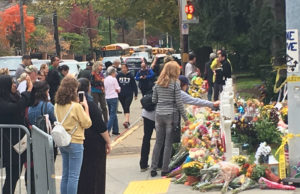 Our Nov. 2 mystery, “The power of flowers,” shows people placing flowers at the Tree of Life synagogue in Pittsburgh following the massacre of 11 worshippers. Photo by Andy Brack.
Our Nov. 2 mystery, “The power of flowers,” shows people placing flowers at the Tree of Life synagogue in Pittsburgh following the massacre of 11 worshippers. Photo by Andy Brack.
Congratulations to several readers who correctly identified the photograph, including: Jay Altman and Robert Feinstein, both of Columbia; George Graf of Palmyra, Va.; Philip Cromer of Beaufort; Will Bradley of Las Vegas., Nevada; Howard Coonley of Hilton Head Island; William Heitsman of Darlington; Barry Wingard of Florence; and Faith Line of Anderson. Thanks all!
- Send us a mystery: If you have a photo that you believe will stump readers, send it along (but make sure to tell us what it is because it may stump us too!) Send to: feedback@statehousereport.com and mark it as a photo submission. Thanks.
S.C. ENCYCLOPEDIA
HISTORY: Sweetgrass baskets
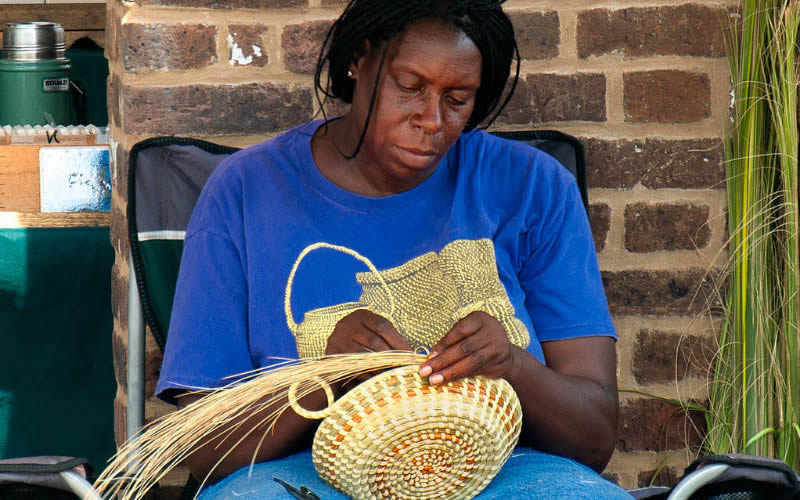
Like the grasslands and marshes of western and central Africa, the coastal wetlands of Georgia and South Carolina provide grasses and plant fiber appropriate for making coiled baskets. On lowcountry plantations, enslaved Africans used bulrush most often as the foundation material. To wrap and stitch the rows of the baskets together, people who lived on the Sea Islands fashioned strips from the stems of saw palmettos, while sewers on the mainland used white oak splints.
Following the Civil War, men continued to make agricultural baskets on family farms carved out of the old plantations, while women made household forms such as sewing and storage baskets, carrying trays, and “missionary bags,” said to be modeled on bags carried by the Quaker missionaries. With rice production in decline, household baskets came to dominate, and women became more conspicuous in the craft. The shift from “work baskets” to “show baskets” also meant a change in materials from bulrush to sweetgrass and from saw palmetto to cabbage palm.
The sweetgrass revolution at the turn of the twentieth century began in the vicinity of Boone Hall Plantation near the village of Mount Pleasant, across the Cooper River from Charleston. There, around 1916, a young merchant named Clarence W. Legerton contacted Sam Coakley, an elder in the black community, and arranged to come every other Saturday to Coakley’s house to buy baskets in quantity to sell retail in his King Street shop and wholesale to department stores in New York and other northern cities.
Basket production increased dramatically. With the paving of coastal Highway 17 and the opening of the Cooper River Bridge in 1929, basket makers found a way to reach their primary market directly. They began selling baskets on the roadside, displaying them on chairs or overturned crates. As the tourist trade quickened, sewers responded with new basket shapes displayed on an innovative marketing device—the basket stand.
Since the 1970s, suburban and resort development has drastically diminished the local supply of sweetgrass. The highway that once assured the survival of the tradition threatens to run the basket stands off the road. In spite of these dangers, lowcountry basketry continued to thrive into the twenty-first century. To compensate for the sweetgrass shortage, sewers reintroduced bulrush. Baskets became bigger and bolder. As symbols of a distinct African American culture, lowcountry baskets have much significance and meaning. Yet they remain what they have always been: coiled grass vessels that are useful for countless purposes.
— Excerpted from an entry by Dale Rosengarten. This entry hasn’t been updated since 2006. To read more about this or 2,000 other entries about South Carolina, check out The South Carolina Encyclopedia, published in 2006 by USC Press. (Information used by permission.)
ABOUT STATEHOUSE REPORT
Statehouse Report, founded in 2001 as a weekly legislative forecast that informs readers about what is going to happen in South Carolina politics and policy, is provided to you at no charge every Friday.
- Editor and publisher: Andy Brack, 843.670.3996
- Statehouse correspondent: Lindsay Street
More
- Mailing address: Send inquiries by mail to: P.O. Box 22261, Charleston, SC 29407
- Subscriptions are free: Click to subscribe.
- We hope you’ll keep receiving the great news and information from Statehouse Report, but if you need to unsubscribe, go to the bottom of the weekly email issue and follow the instructions.
- © 2018, Statehouse Report. All rights reserved.















 We Can Do Better, South Carolina!
We Can Do Better, South Carolina!